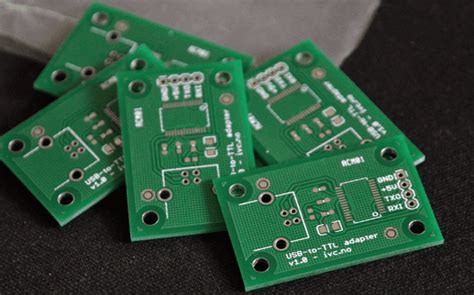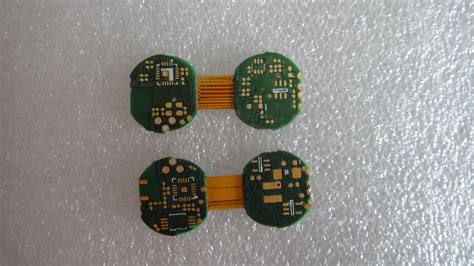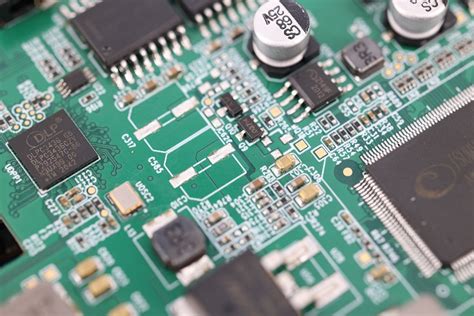Maximizing Efficiency: Contract Manufacturing and PCB Assembly Secrets
Key Takeaways
In the world of contract manufacturing, understanding the intricacies of PCB assembly is crucial for success. The process of PCBA involves several layers of complexity, but a few key strategies can significantly enhance efficiency. First, leveraging advanced technologies can streamline pcb assembly processes, allowing for quicker turnaround times and improved precision. Implementing robust quality control measures ensures that each component functions effectively, reducing the likelihood of costly errors later in production. Additionally, fostering strong relationships with your contract manufacturers often leads to better communication and collaboration, which are essential for resolving issues promptly. It is critical to understand the common pitfalls in manufacturing, such as overlooking the importance of thorough testing or failing to assess supply chain vulnerabilities. By focusing on these essential elements, businesses can position themselves to not only reduce costs but also improve overall productivity in their electronic product development journeys. Embracing these insights will pave the way for a more successful pcb assembly experience and optimal outcomes throughout various stages of manufacturing.
Understanding Contract Manufacturing: The Basics of PCB Assembly
Contract manufacturing plays a pivotal role in the development of electronic products, particularly through PCB assembly or PCBA. This process involves outsourcing the production of printed circuit boards and their assembly to specialized manufacturers, allowing companies to focus on their core competencies while leveraging external expertise. By collaborating with contract manufacturers, businesses can not only enhance their operational capacity but also improve their output quality.
An understanding of the basic components involved in PCB assembly is essential for optimizing these processes. The journey begins with a well-defined design which is then translated into a functional PCB layout using sophisticated software tools. Following design approval, contract manufacturers take charge of procuring components and managing inventory effectively, which is crucial for maintaining production timelines.
To illustrate the relationship between different stages of contract manufacturing and PCBA, consider the following table:
| Stage | Description | Impact on Production |
|---|---|---|
| Design & Prototyping | Development of PCB layout and prototype testing | Reduces errors, accelerates production time |
| Component Sourcing | Procuring high-quality components | Lowers costs, enhances durability |
| Assembly Process | Mounting components onto PCBs | Ensures precision and quality |
| Testing & Quality Control | Final evaluation of assembled PCBs | Guarantees functionality and reliability |
In an increasingly competitive landscape, mastering the fundamentals of contract manufacturing and understanding aspects like material selection, design for manufacturability (DFM), and other related principles can significantly influence a company’s success in achieving robust PCB assembly results.
“Efficiency in PCB assembly is not merely about streamline processes; it’s about integrating quality at every level.”
By grasping these foundational concepts, businesses can not only navigate the complexities of PCBA but also harness opportunities for innovation and growth in their respective markets.
Key Strategies for Streamlining PCB Assembly Processes
Streamlining pcb assembly processes is fundamental for achieving efficiency and cost-effectiveness in electronic manufacturing. One effective approach is to embrace automation. By integrating advanced machines and equipment, manufacturers can significantly reduce manual handling and the likelihood of errors, thus enhancing the overall quality of the pcba. Additionally, adopting just-in-time (JIT) inventory management allows companies to maintain lower inventory costs while ensuring that necessary components are available when required for assembly. This practice not only minimizes waste but also frees up capital, which can be reallocated to areas that drive innovation and growth.
Another crucial strategy is to employ standardized processes across assembly lines. Developing standard operating procedures (SOPs) ensures consistency in production, leading to easier training of new employees and simplifying troubleshooting when issues arise. Furthermore, frequent assessments of workflow can identify bottlenecks or inefficiencies that may compromise timelines and output quality. By fostering a culture that encourages feedback from team members involved in the pcb assembly, manufacturers can continuously refine their processes.
Lastly, effective communication with contract manufacturers is vital for a smooth operation. Clear expectations regarding timelines, quality standards, and potential challenges create a partnership built on trust and collaboration. This synergy ultimately allows for proactive problem-solving, which can prevent costly delays in product development cycles and assure timely delivery of high-quality electronic products. In summary, streamlining pcb assembly involves a mix of automation, standardization, workflow evaluation, and robust communication—all essential components for enhancing productivity in the highly competitive landscape of electronics manufacturing.
Cost Reduction Techniques in Contract Manufacturing
In the realm of contract manufacturing, particularly in PCB assembly (or PCBA), implementing effective cost reduction techniques is crucial for maintaining competitive advantages. One significant approach involves optimizing the supply chain. By negotiating better terms with suppliers and seeking alternative materials that meet specifications without sacrificing quality, companies can significantly lower overhead costs. Additionally, embracing lean manufacturing principles can streamline processes, thereby eliminating waste and enhancing productivity. For instance, adopting methods such as Just-In-Time (JIT) inventory can reduce holding costs and minimize excess material expenditures. Furthermore, investing in automation technology for the PCB assembly line not only boosts efficiency but also reduces labor costs over time. Employee training is another essential component; equipping workers with skills in advanced machinery and quality control can lead to fewer errors and less rework, thereby saving resources. Overall, integrating these techniques in contract manufacturing and PCBA processes can lead to substantial cost savings while maintaining high standards of quality and output.Harnessing these strategies will not only optimize operations but also contribute to a more sustainable business model.
Quality Control Measures for Successful PCB Assembly
Ensuring the highest standards of quality is paramount in the pcb assembly process. Implementing robust quality control measures can significantly enhance the reliability and performance of your electronic products. One essential strategy is to adopt a comprehensive inspection process at every stage of pcba production, from material selection to final assembly. This involves conducting rigorous inspections of incoming materials to verify their compliance with specifications, as well as implementing tests during the manufacturing process, such as Automated Optical Inspection (AOI) or X-ray inspection for solder joints. Additionally, fostering a culture of continuous improvement through regular training and feedback loops helps personnel remain vigilant and aware of potential issues. It’s also critical to establish well-documented procedures and standards that guide each step of the pcb assembly process, ensuring that teams can consistently meet quality expectations. By prioritizing these quality control measures, manufacturers not only mitigate defects but also build trust with clients, ultimately leading to enhanced productivity and reduced costs over time.
The Role of Technology in Enhancing Manufacturing Efficiency
In today’s fast-paced electronic landscape, the role of technology in enhancing manufacturing efficiency is paramount, especially when it comes to pcb assembly and overall contract manufacturing. The integration of advanced automated systems and smart technologies can significantly streamline the pcba process, reducing manual labor while increasing precision. For instance, implementing robotic assembly lines allows for faster production rates and minimizes human error, thereby ensuring greater consistency in the final product. Furthermore, the use of machine learning algorithms can optimize workflows by predicting potential delays or identifying bottlenecks before they impact production schedules. By utilizing data analytics, manufacturers are better equipped to monitor performance metrics in real time, enabling swift adjustments to enhance productivity. The incorporation of these technological innovations not only drives cost efficiency but also plays a crucial role in maintaining high quality standards throughout the pcb assembly process. Ultimately, embracing these advancements fosters a more agile manufacturing environment capable of adapting to ever-changing market demands.
Building Strong Partnerships with Contract Manufacturers
Creating strong partnerships with contract manufacturers is essential for successful PCB assembly projects. This collaborative relationship can lead to significant benefits in the realms of efficiency and quality. When engaging with a contract manufacturer, it’s important to establish clear communication channels that facilitate the sharing of ideas and expectations. Regular updates and feedback loops can help troubleshoot any issues that arise during the PCBA process, ensuring that both parties are aligned in their objectives.
Furthermore, understanding each other’s strengths is crucial. For instance, if a manufacturer has advanced capabilities or specialized knowledge in certain areas, leveraging these strengths can enhance the overall PCB assembly outcomes. Regularly assessing performance metrics and quality benchmarks allows both you and your contract manufacturer to identify opportunities for improvement.
Building trust is another cornerstone of these partnerships. This means being transparent about requirements, budget constraints, and timelines while maintaining a level of flexibility that respects the dynamics of manufacturing. In return, a reliable contract manufacturer will often invest in understanding your project needs deeply, which can lead to innovations that drive down costs and enhance the overall value of your products.
Ultimately, nurturing these partnerships can transform your approach to pcba, making it a collaborative effort focused on fostering mutual growth and success in electronic product development.
Common Pitfalls to Avoid in PCB Assembly and Manufacturing
In the world of contract manufacturing and PCB assembly, avoiding common pitfalls can significantly impact the success of electronic product development. One major challenge is poor communication between teams, which can lead to misunderstandings regarding specifications and project timelines. It’s essential to establish clear lines of communication to ensure that everyone involved is on the same page. Additionally, underestimating the complexity of PCBA can result in unforeseen costs and delays; thus, it’s crucial to conduct thorough research and planning before diving into production.
Another critical factor is neglecting proper quality control measures. Quality assurance in PCB assembly should not be an afterthought; implementing stringent testing protocols throughout the manufacturing process can help catch defects early, thereby saving time and resources down the line. Moreover, overlooking supplier reliability can lead to issues with component sourcing that ultimately stall production schedules. Building strong relationships with dependable suppliers is vital for maintaining a seamless workflow.
Finally, being resistant to adopting new technologies may hinder efficiency in contract manufacturing processes. Embracing advancements such as automated inspection systems or advanced design software can enhance accuracy and speed in PCBA projects. By being aware of these common pitfalls—communication breakdowns, quality control lapses, supply chain issues, and reluctance to innovate—manufacturers can develop more streamlined and effective PCB assembly processes that yield high-quality results while reducing costs.
Future Trends in Contract Manufacturing and PCB Assembly
As we look towards the future of contract manufacturing and PCB assembly, several trends are beginning to reshape the landscape of electronic production. One significant trend is the increasing adoption of automation and robotics within pcba operations, which enhances efficiency and accuracy while reducing human error. This technological shift allows manufacturers to streamline the pcb assembly process, thereby accelerating production timelines without compromising quality. Moreover, the rise of Industry 4.0 is fostering a more interconnected manufacturing environment. By integrating smart technologies such as IoT (Internet of Things), manufacturers can monitor real-time data during pcb assembly, leading to improved decision-making and enhanced responsiveness to changes in production demands.
Sustainability is another critical trend that is gaining momentum in the contract manufacturing sector. As environmental concerns become more pressing, there is a growing need for contract manufacturers to implement eco-friendly practices within their operations. This shift includes utilizing green materials in pcba processes and investing in energy-efficient equipment, contributing not only to regulatory compliance but also enhancing brand reputation among increasingly aware consumers.
Furthermore, there is an emphasis on localized supply chains to mitigate risks associated with global disruptions. By fostering partnerships with regional suppliers, companies can ensure timely delivery of components essential for efficient pcb assembly, leading to shorter lead times and increased agility in responding to market changes.
Lastly, as the demand for customization rises due to consumer preferences for unique products, contract manufacturers are focusing on flexible manufacturing solutions that allow for adaptable “build-to-order” pcba services. This flexibility ensures that companies can tailor their production lines rapidly without extensive downtime or costs associated with reconfiguration.
These emerging trends highlight a dynamic future for contract manufacturing and PCB assembly, characterized by innovation, adaptability, and sustainability—key components in optimizing processes for continued growth and success in electronic product development.
Conclusion
In the rapidly evolving landscape of electronic product development, optimizing contract manufacturing and PCB assembly processes is crucial for achieving sustainable success. As we conclude our examination of strategies and practices within this domain, it’s evident that focusing on efficiency is key. By implementing effective cost reduction techniques, enhancing quality control measures, and leveraging modern technology, businesses can not only improve their pcba processes but also significantly boost overall productivity. Establishing strong partnerships with reliable contract manufacturers can facilitate smoother operations and help avoid common pitfalls that hinder progress. Furthermore, staying ahead of future trends in contract manufacturing and PCB assembly ensures that companies remain competitive in a market that demands agility and innovation. By utilizing these insights, organizations can embark on their electronic development journeys with confidence, paving the way for high-quality results and better economic performance.
FAQs
What is PCB assembly and why is it important?
PCB assembly, or PCBA, is the process of connecting electronic components to a printed circuit board (PCB). This step is crucial as it determines the functionality and reliability of electronic devices.
How can I streamline my PCB assembly processes?
To streamline PCB assembly, implement standardized workflows, utilize automated equipment, and invest in training your staff on best practices. This not only enhances efficiency but also minimizes errors.
What cost reduction techniques are effective in contract manufacturing?
Effective cost reduction techniques include bulk purchasing of materials, negotiating long-term contracts with suppliers, and optimizing production schedules to reduce downtime. These strategies can lead to significant savings in contract manufacturing.
How do I ensure quality control in PCB assembly?
Implement rigorous testing phases throughout the PCBA process. Use automated optical inspection (AOI) systems, perform functional testing, and maintain detailed documentation for traceability to ensure high-quality results.
What role does technology play in enhancing manufacturing efficiency?
Technology plays a vital role through automation, real-time monitoring systems, and advanced manufacturing software that optimizes production schedules. Investing in modern technology can lead to increased productivity in both contract manufacturing and PCB assembly.
How do I build strong partnerships with contract manufacturers?
Communicate openly about expectations, share feedback regularly, and work collaboratively on problem-solving. This approach fosters trust and improves overall relationships with your contract manufacturer.
For more insights on optimizing your PCB assembly processes, please visit: Andwin PCB Assembly







